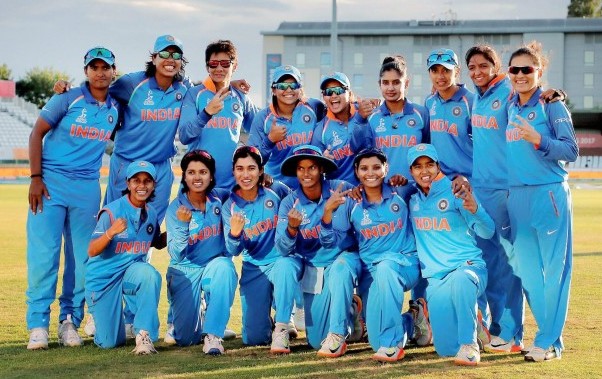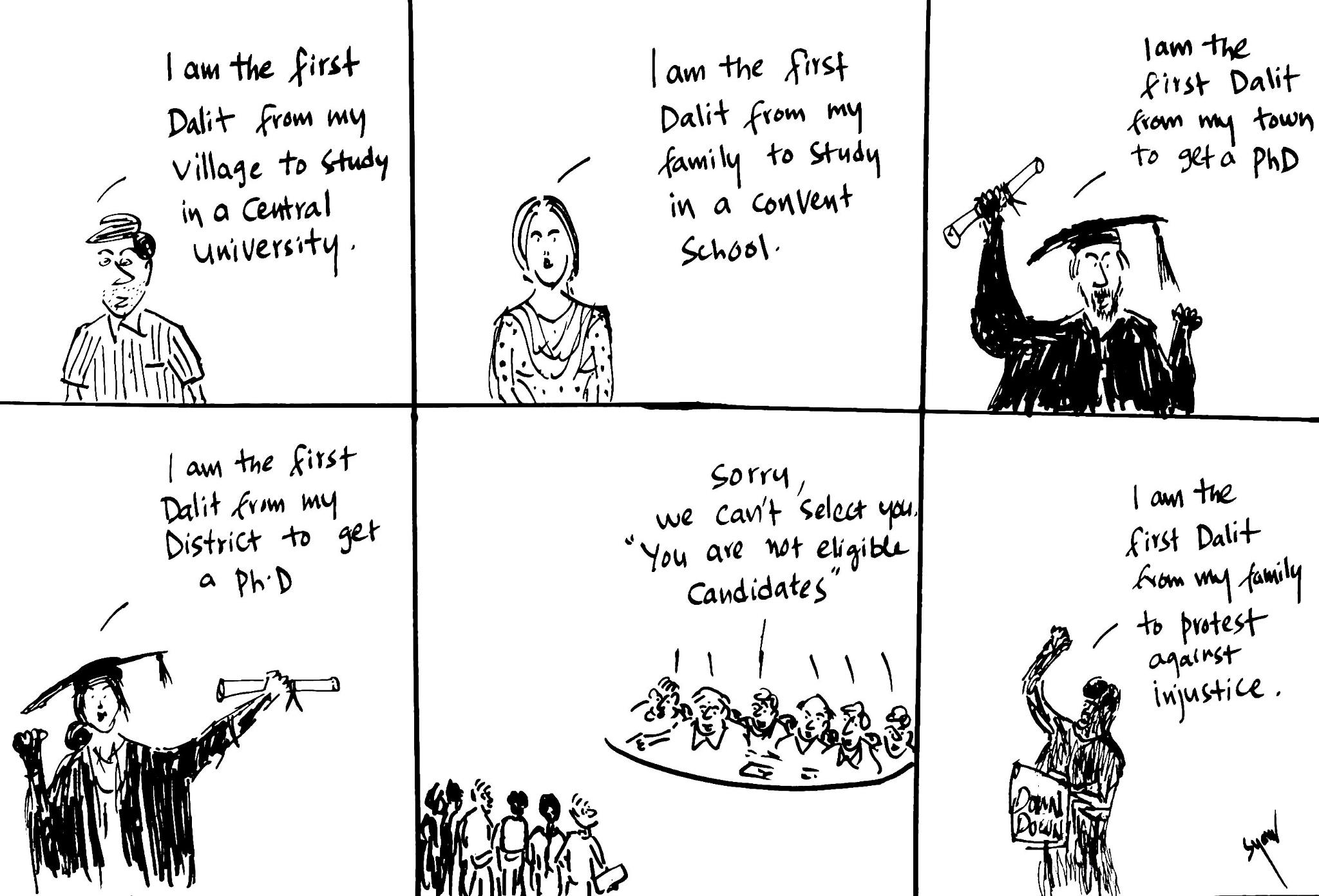Sukanya Shantha
Early this month, union minister Ramdas Athawale made a statement demanding 25 per cent1 reservation for the Dalit and Adivasi community in the Indian men’s cricket team. His demand, as expected, touched many raw nerves and anti-reservationists were prompt in their efforts to quell his proposition. They retorted with the usual “efficient versus non- meritorious” argument. Athawale’s suggestions were clear. He was referring to the poor performance by the men’s cricket team in the recent matches and felt only diversity—in an otherwise purely savarna sport—could help salvage the situation. What Athawale had suggested has already made into the mission statement and functioning of the Cricket South African (CSA), the board that governs their national cricket team. The CSA’s mission statement mentions the country’s diversity as its strength and wants to base its activities on fairness, inclusivity and non-discrimination2.

Barring one or two players, most male cricketers in India have come from the privileged brahmin-savarna caste locations. A few “transgressors”, who managed to enter this strictly endogamous space, have invariably had to make a painful exit. Somewhere in our fading memories, we might even remember Vinod Kambli for his great performance and then his exit from the sport much before time. Some critics pointed at his “class background” and the lack of support as the probable reason for his supposed debacle. But sadly most fell short of associating his fall with the blatant caste practices that have prevailed in this sport. And when foreign publications3 tried to point at the caste bias in the sport, Indian scholars rubbished4 the effort. And, with all this, then to see recurrence of caste names like Gavaskar, Tendulkar and Jadeja in the list of men’s cricket players, year after year, one might actually wonder if this is some “special sport” played only by a certain entitled caste group.
The nationalist rhetoric, disproportionate media attention and public’s sycophancy for the men’s cricket have made it difficult to have a critical caste analysis of the sport. Anti- caste leaders and scholars have on a few occasions criticized the sport, but this criticism could never gain currency- thanks to an equally lopsided savarna media. But, on the contrary, to then find nearly 50 per cent of the Indian women’s cricket team coming from the Dalit- Bahujan backgrounds, it feels nothing short of a miracle.
The present women’s cricket team comprises of refreshingly diverse group of women, with stories of great struggles and sacrifices. Stories of fighting patriarchy and poverty seem like a common thread running in many of these players’ lives. While there is a noticeable number of Pandeys and Sharmas in the team, one still cannot miss the presence of Bahujan players amidst them. And each of these players has given a spectacular performance in the recent world cup.
What makes me curious is that in the otherwise notoriously savarna bastion, Bahujan women have not just managed to make an entry, but have also sustained themselves and put out a remarkable show. I could possibly think of three hypotheses to understand this. First, may be the Bahujan women have outperformed the savarna women; or the second, Bahujan women find more family support and encouragement than the savarna women, even when the sport is not considered to be “ladylike”; or the third, cricket still remains an “affordable” dream for the Bahujan women. All three seem probable to me.
The association of masculinity prevails in most sports. Masculinity lays a special emphasis on bravery, physical strength, toughness, tolerance for pain. If one were to take a close look at the gendering of popular contemporary forms of sport, one can easily tell which game is perceived as masculine and which is not. And intriguingly, most overtly “masculine” sport has always had more women from the Bahujan rural households participating than their savarna counterparts. Sports such as wrestling, body building, athletics, boxing, gymnastics, and cricket require a great deal of strength. Getting your hands dirtied and limbs broken is a prerequisite for these games. So with women entering these games, the myth of “frailty”, which in the patriarchal society informs the understanding of a woman’s body, is burst. Bahujan women have broken these notions, sport by sport, both on the domestic and international platforms. Sports icons like P T Usha, Mary Kom and many others have scaled the pinnacle of glory with great tenacity and fortitude. Not undermining the struggles that each of these Bahujan sportswomen must have had to face while embarking their journeys—vis-à-vis both on the economic and patriarchal front—they definitely seem to have had more acceptance and encouragement from their families. Contrary to what the savarna feminist discourses would want us to believe.
But getting an opportunity to learn this sport and being able to play it internationally are entirely two different things. Or else, by now at least a few dozen Bahujan boys would have surely gone beyond their bastis and gullys, making cricket their career. For Bahujan sportswomen, however, the scene seems slightly different. May be the “missing” of savarna women from the sport has reduced the possibility of caste discrimination against them and proved to be a real game changer. And in addition to that, Bahujan sportswomen are also successfully bursting another myth of “efficiency”. If anything, their presence in such a physically strenuous sport is the true marker of proficiency.
One can also draw a clear link between the games played and taught only within gated sports clubs and caste. These sports have remained exclusively available only to those with resources and affluence. Even the dream to play these sports is unaffordable for the majority. It does not surprise us then to see only savarna and dominant castes producing “great players” in these sports. But on the other hand, despite its expensive equipments and expensive turf pitches, cricket has still remained a localized game with people making do with unsophisticated sports gear and any available patch of land to realize their dreams.
But the women’s cricket scene is slowly undergoing a change too. The brahmin-dominated Board of Control for Cricket in India has already replaced the Women’s Cricket Association of India. The team’s commercial success will soon become a predominant factor, automatically attracting more upper caste women towards the sport. Growing popularity and developing support structures for women players might be looked at as a great opportunity for women in general. But unless special care and as Athawale suggests, an affirmative policy is not introduced to ensure the interest of Bahujan talents in the sport, it might just be a matter of time before the women’s cricket meets with a similar fate as the men’s team.
Notes
1. http://indianexpress.com/article/india/ramdas-athawale-demands-reservations-for-scs-sts-in-indian-cricket-team-4731325/
2. http://cricket.co.za/cat/23/About-CSA
3. http://www.smh.com.au/news/cricket/a-class-act-opinions-differ/2008/01/04/1198950076545.html?page=fullpage#contentSwap2
4. http://www.espncricinfo.com/magazine/content/story/329291.html
~~~
Sukanya Shantha is a Bombay- based freelance journalist who writes on law and social justice.
Picture courtesy: the internet










